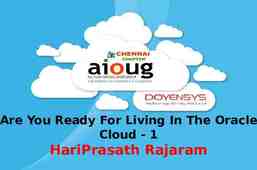Adverse Childhood Experiences: What Happens Early Can Change Lives
32 Slides3.72 MB
Adverse Childhood Experiences: What Happens Early Can Change Lives Name of Presenter Material developed by the American Academy of Pediatrics Revised: August 2018
Objectives Participants will be able to Define Adverse Childhood Experiences (ACE) Articulate how ACEs are important and the ways early experiences can change lives Identify strategies for building the foundation for healthier lives by translating the science into action
What is the Adverse Childhood Experiences (ACE) Study? The largest study of its kind that looks at the health and social effects of adverse childhood experiences over a lifespan. About the CDC-Kaiser ACE Study. Centers for Disease Control and Prevention Website. https://www.cdc.gov/violenceprevention/acestudy/about.html. Updated June 14, 2016. Accessed July 17, 2018.
What is the Adverse Childhood Experiences (ACE) Study? Study participants were middle-class Americans from San Diego, 75% white, 75% attended college, average age of 57, split evenly between men and women. NOTE: Not an impoverished or “at-risk population” About the CDC-Kaiser ACE Study. Centers for Disease Control and Prevention Website. https://www.cdc.gov/violenceprevention/acestudy/about.html. Updated June 14, 2016. Accessed July 17, 2018.
“The perception of adversity is subjective, but the reaction is not” - Drs. Andrew Garner and Robert Saul, Thinking Developmentally Source: Garner, A. and Saul, R. (2018) Thinking Developmentally. Itasca, IL: American Academy of Pediatrics, pg. 16
The True Nature of Pediatric Preventive Medicine and Public Health Source: The Ace Pyramid. Centers for Disease Control and Prevention Website. https://www.cdc.gov/violenceprevention/acestudy/about.html. Updated June 14, 2016. Accessed July 2018.
What Are Adverse Childhood Experiences (ACE)? A mix of experiences and exposures in childhood that are major risk factors for certain illnesses and poor quality of life Categorized into three groups: abuse neglect family/household challenges Source: About the CDC-Kaiser ACE Study. Centers for Disease Control and Prevention Website. https://www.cdc.gov/violenceprevention/acestudy/about.html. Updated June 14, 2016. Accessed July 17, 2018
Prevalence of Adverse Childhood Experiences (1995-97 Data) Adverse Childhood Experiences (1 point for each category listed) Physical, sexual or emotional abuse Physical or emotional neglect Household mental illness Living in a household with substance abuse Having a parent/caregiver divorce or separate Exposure to domestic violence Living in a household where a member was or has been incarcerated ACE Score Women Men 0 35% 38% 1 25% 28% 2 16% 16% 3 10% 9% 4 or more 15% 9% About the CDC-Kaiser ACE Study. Centers for Disease Control and Prevention Website. https://www.cdc.gov/violenceprevention/acestudy/about.html. Updated June 14, 2016. Accessed July 17, 2018.
As the ACE Score increases, the risk of the following health problems increases Health Problems ACE Score Alcoholism/alcohol abuse Sexually Transmitted Diseases Chronic Obstructive Pulmonary Disease 0 Depression Fetal death 1 Health related Quality of Life Liver disease 2 Smoking 3 Unintended pregnancy Suicide attempts 4 or more Intimate partner violence Ischemic heart disea About the CDC-Kaiser ACE Study. Centers for Disease Control and Prevention Website. https://www.cdc.gov/violenceprevention/acestudy/about.html. Updated June 14, 2016. Accessed July 17, 2018. Prevalence in Study (1995-97 data) 36% 26% 16% 10% 13%
We know that: Early Adverse Experiences (ACEs) contribute directly to the risk for long-term physical and mental health. Source: U.S. Department of Health and Human Services, Administration for Children and Families, Administration on Children, Youth and Families, Children’s Bureau. Child Maltreatment 2016. Published 2018. https://www.acf.hhs.gov/sites/default/files/cb/cm2016.pdf. Accessed July 17, 2018.
Significant Adversity Impairs Development in the First Three Years Children with Developmental Delays 100% 80% 60% 40% 20% 1-2 3 4 5 6 7 Number of Risk Factors Source: "Significant Adversity Impairs Development in the First Three Years." Data Source: Barth, R.P et al. (2008); Appeared in Center on the Developing Child (2007). The Impact of Early Adversity on Child Development (InBrief). Retrieved from www.developingchild.harvard.edu. Accessed July 17, 2018.
Positive or Adverse Childhood Experiences: Its Impact on Brain Architecture Luby JL, Barch DM, Belden A, et al. Maternal support in early childhood predicts larger hippocampal volumes at school age. PNAS. 2012; 109(8): 2854-2859. https://doi.org/10.1073/pnas.1118003109
Poverty and the Brain Children in poverty have reduced gray matter volumes – Reduced gray matter accounts for between 15 – 20% of income-related achievement gap – Reductions impact executive function Chronic stressors related to poverty impact brain development – Raised levels of cortisol and other stress markers Source: Blair C, Raver C. Poverty, Stress, and Brain Development: New Directions for Prevention and Intervention. Academic Pediatrics. 2016; 16(3): S30-S36. https://doi.org/10.1016/j.acap.2016.01.010. .
Resilience Supportive relationships and opportunities for skill building Dynamic interaction between internal predispositions and external experiences Learning to cope with manageable threats Extreme responses to experiences Earlier is better, but can happen anytime Source: Resilience. Center on the Developing Child at Harvard University Website. https://developingchild.harvard.edu/science/key-concepts/res ilience/. Accessed on July 17, 2018.
Why Are ACEs Important? Significant adversity in childhood is strongly associated with unhealthy lifestyles and poor health decades later. Felitti VJ, Anda RF, Norderberg D, et al. Relationship of Childhood Abuse and Household Dysfunction to Many of the Leading Causes of Death in Adults. Am J Prev Med. 1998; 14(4): 245-258. doi: 10.1016/S0749-3797(98)00017-8.
However. . . This does not mean that “bad things” are necessarily a long-term negative. Felitti VJ, Anda RF, Norderberg D, et al. Relationship of Childhood Abuse and Household Dysfunction to Many of the Leading Causes of Death in Adults. Am J Prev Med. 1998; 14(4): 245-258. doi: 10.1016/S0749-3797(98)00017-8.
What Happens Early Can Change Lives The social and physical environment can serve as a buffer to these “bad things.” Felitti VJ, Anda RF, Norderberg D, et al. Relationship of Childhood Abuse and Household Dysfunction to Many of the Leading Causes of Death in Adults. Am J Prev Med. 1998; 14(4): 245-258. doi: 10.1016/S0749-3797(98)00017-8.
How You Can Build a Foundation for Healthier Lives? We know that the effects of adverse childhood experiences can last a lifetime—but they do not have to.
ACEs and the Brain Early nurturing, responsive interactions build healthy brain architecture that serves as the foundation for health and well-being.
ACEs and the Brain But if there are no supportive relationships, what occurs is TOXIC STRESS
Toxic Stress Toxic Stress is long lasting, frequent, or strong intensity More extreme precipitants of childhood stress (ACE) – Physical, sexual, emotional abuse – Physical, emotional neglect – Household dysfunction Insufficient social-emotional buffering can mean: – Potentially permanent changes and long-term effects on brain architecture that can have negative life-long health effects Shonkoff JP, Garner AS, American Academy of Pediatrics Committee on Psychosocial Aspects of Child and Family Health, Committee on Early Childhood, Adoption, and Dependent Care, Section on Developmental and Behavioral Pediatrics. The lifelong effects of early childhood adversity and toxic stress. Pediatrics. 2012;129(1):e232-e246. doi: 10.1542/peds.2011-2663.
Impact of Early Stress CHILDHOOD STRESS TOXIC STRESS Hyper-responsive stress response; calm/coping Chronic “fight or flight;” cortisol / norepinephrine Changes in Brain Architecture Garner A, Saul R. Thinking Developmentally. Itasca, IL: American Academy of Pediatrics; 2018.
Genes and Experience: Both Contribute to Development
How You Can Build the Foundation for Healthier Lives If Toxic Stress is the missing link between ACE exposure and poor adult outcomes, we need to know: Are there ways to: – treat, – mitigate, and/or – immunize against the effects of toxic stress?
The Importance of the Early Years “Developing skills and abilities is the best way to solve the problems of economic and social inequality Later remediation is costly and, as currently configured, is usually ineffective.” – The Heckman Equation (2015) Heckman J. Human Development is Economic Development. Presentation at: California Water Cooler Conference; March 23, 2015; Sacramento, CA. https://heckmanequation.org/assets/2017/01/F Heckman20Water20Cooler .031915.pdf.
The Heckman Equation Source: The Heckman Equation, downloadable toolkit: Social Media Content: Early Investments and Return on Investment for ECE/Childcare https://heckmanequation.org/resource/social-posts-early-investments-and-return-on-investment-f or-ece-childcare/ , Accessed August 28,2018
WHAT are we DOING?! Universal Primary Preventions Bright Futures Reach Out and Read Connected Kids Quality Early Education Relationships as a “vital” sign Basic EBCD Competencies Targeted Interventions Screening for risks (assess the ecology) Evid. Based Positive Parenting Refer to/advocate for EBI Collaborating/Developing EBI Mid-level Competencies Evidence-Based Treatments Screening for diagnoses Common factors approach Refer for/advocate for EBT Collaborating/Developing EBT Advanced Competencies
Resources to Share
The Role of Caregiving Toxic stress and adverse experiences impact families and caregiving practices Two generation intervention approaches can mediate negative experiences Source: Blair C, Raver C. Poverty, Stress, and Brain Development: New Directions for Prevention and Intervention. Acad Pediatr. 2016; 16(3): S30-S36. doi: 10.1016/j.acap.2016.01.010.
How You Can Build the Foundation for Healthier Lives Routinely seek history of adverse childhood experiences from all patients Promote universal primary prevention strategies Promote parenting and social-emotional skills Advocate for services that support parents Advocate for early childhood interventions and programs that support high quality early childhood
“Children develop within an environment of relationships that begins in the family but also involves other adults who play important roles in their lives.” Source: Center on the Developing Child at Harvard University. From Best Practices to Breakthrough Impacts: A Science-Based Approach to Building a More Promising Future for Young Children and Families.2016:8.
Questions?





































